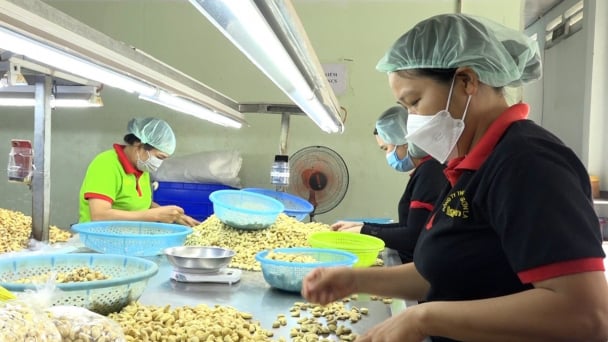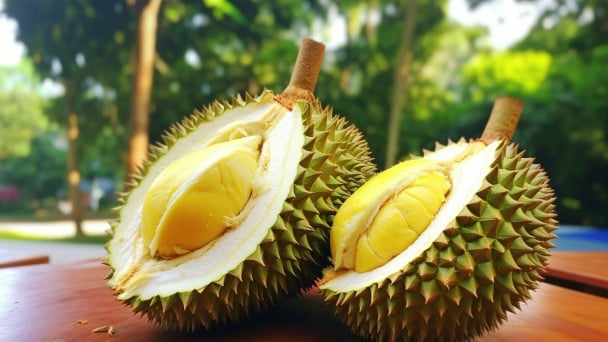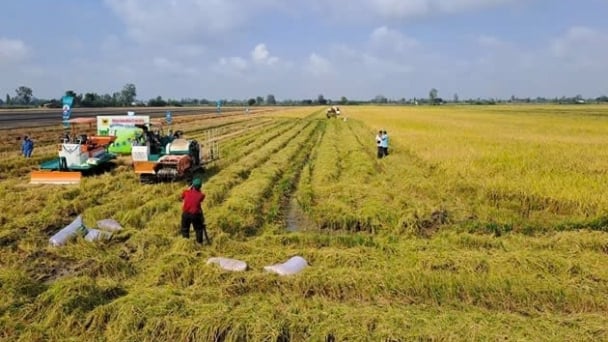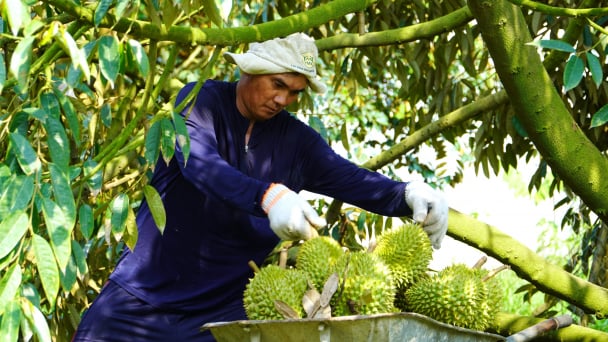May 24, 2025 | 16:19 GMT +7
May 24, 2025 | 16:19 GMT +7
Hotline: 0913.378.918
May 24, 2025 | 16:19 GMT +7
Hotline: 0913.378.918
According to statistics from the General Department of Customs, in the third quarter of 2024, Vietnam's rubber exports reached a total of 589.71 thousand tons, valued at 988.44 million USD. This marked an impressive increase of 89.3% in volume and 98% in value compared to the second quarter of 2024. However, when compared to the same period in 2023, the volume of exports dropped by 7.2%, although the export value saw a notable increase of 19.7%.
Despite the significant decrease in export volume compared to the third quarter of 2023, the overall export revenue of Vietnamese rubber remained strong, driven by consistently high export prices in recent months. Given these trends, Vietnam's rubber export turnover for the entire year of 2024 is expected to reach between 3 and 3.5 billion USD. This would represent an increase of between 200 and 400 million USD compared to the total export value in 2023.
In the third quarter of 2024, the majority of Vietnam's rubber exports were directed to the Asian market, which accounted for a significant 86.9% of the total export volume and 86.26% of the total export value for the entire country.
Specifically, in the third quater of 2024, Vietnam's rubber exports to Asia amounted to 512.48 thousand tons, valued at 852.65 million USD. This marked a substantial increase of 83.7% in volume and 93.1% in value compared to the second quarter of 2024. However, when compared to the same period in 2023, there was a decline in export volume of 13.3%. Despite this drop in volume, the export value still experienced an increase of 11.2%.

Vietnam's rubber export revenue is forecast to reach 3 to 3.5 billion USD in 2024. Photo: NNVN.
China remains the largest export market for Vietnam’s rubber, accounting for 67.48% of the total volume and 66.39% of the total value of the country's rubber exports. In the third quarter of 2024, Vietnam exported 397.91 thousand tons of rubber to China, worth 656.23 million USD. This marked a significant increase of 97.6% in volume and 111.8% in value compared to the second quarter of 2024. However, compared to the third quarter of 2023, exports to China decreased by 22.5% in volume and 0.7% in value.
The second-largest export market was India, which accounted for 8.36% of the total volume and 8.93% of the total value of Vietnam's rubber exports. Vietnam exported 49.27 thousand tons of rubber to India, valued at 88.29 million USD. This represented an increase of 69.8% in volume and 80.5% in value compared to the first quarter of 2024. Compared to the third quarter of 2023, exports to India rose by 37.3% in volume and 82.3% in value.
In terms of export types, according to data from the General Department of Customs, the most exported product in the third quarter of 2024 was a blend of natural rubber and synthetic rubber (HS 400280). This category accounted for 56.41% of the total volume and 57.41% of the total value of the country's rubber exports. Specifically, Vietnam exported 332.68 thousand tons, worth 567.45 million USD. This was a remarkable increase of 107.7% in volume and 121.8% in value compared to the second quarter of 2024. However, compared to the third quarter of 2023, exports in this category still saw a decline of 23.9% in volume and 3.3% in value.
Since the beginning of 2024, the rubber market has been influenced by several key factors, including a global economic environment that remains less than optimistic, ongoing geopolitical tensions that continue to escalate, and a slowdown in demand from China. These challenges have contributed to a sense of uncertainty in the market. Despite these conditions, rubber prices have seen a notable increase due to a supply shortage.
Looking ahead, there is a possibility that the demand for rubber will continue to rise, particularly as China rolls out stimulus packages aimed at reviving its economy and getting it back on a growth path. The expectation is that these measures will help boost China’s economic recovery and improve its growth prospects, which in turn is likely to increase demand for rubber.
As China remains Vietnam’s largest rubber export partner, any fluctuations or volatility in the Chinese market have a significant and direct impact on Vietnam’s rubber industry.
The Association of Natural Rubber Producing Countries (ANRPC) forecasts that global natural rubber production in 2024 will increase by 3.2% compared to 2023, reaching 14.359 million tons.
Specifically, production in Thailand is expected to decrease by 0.5%, while Indonesia is projected to grow by 12.3%, China by 4.2%, India by 6%, Vietnam by a decline of 2.1%, Malaysia by 0.6%, and other countries by a decrease of 0.5% compared to 2023.
Global natural rubber consumption is expected to rise by 0.4% compared to 2023, reaching 15.24 million tons in 2024. Among the key consumers, China is expected to increase consumption by 3.3%, India by 3%, Thailand by 1.1%, Malaysia by 10.9%, Vietnam by a decrease of 1%, and other countries by a reduction of 3.7%. With this forecast, the global supply of natural rubber in 2024 is projected to fall short by 0.88 million tons compared to demand.
Translated by Phuong Linh
/2025/05/22/5250-1-184853_288.jpg)
(VAN) According to a representative from the Central Retail Vietnam, Vietnamese products such as seafood, sweet potatoes, dragon fruit, coffee, and spices hold great potential in the Thai market.

(VAN) A multi-channel, multi-directional strategy only works when the agricultural value chain meets global transparency and SPS standards.

(VAN) Market expansion is a matter of survival for Vietnamese businesses amid fierce competition and global supply chain fluctuations.

(VAN) Global market prospects for U.S. long-grain rice for the upcoming marketing year.

(VAN) China’s General Administration of Customs started permitting fresh durian shipments from Cambodia after a phytosanitary protocol was signed with the Cambodian Ministry of Agriculture in late April.

(VAN) To operate carbon market, one of the key issues is determining which types of 'commodities' meet the standards to be traded on the market.

(VAN) Durian-producing localities need to coordinate more effectively with central authorities to improve the traceability, monitoring, and response systems in case of violations.